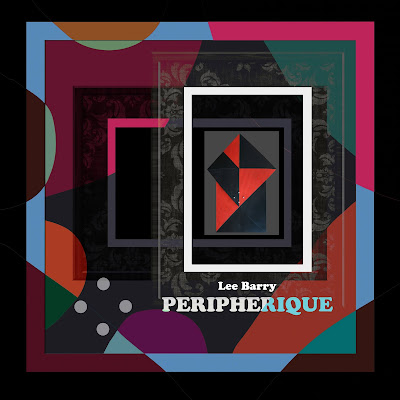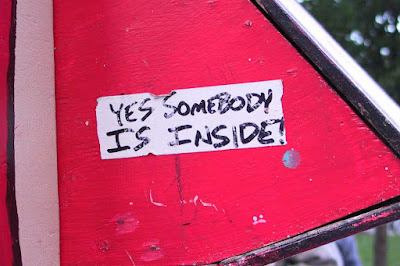Peripherique (2020)
What does funky bass music have to do with the 19th-century French sculptor Rodin?
Fragments.
This is the best image that illustrates how I work when I produce albums. I've always been a collector of ideas and have a good system for organizing them. It's essentially the process of serialization and generativity: making another piece in a series, transforming existing works into new ones, then framing them within some kind of a concept--as Rodin assembled fragments of sculptures.
I invent nothing, I rediscover.- Auguste Rodin
"In later years, Rodin also used to tell the anecdote that the bust he originally intended to create had actually become a fragment, because as a young artist, he could not afford to heat his studio overnight. During a bitter cold winter night, the back of the 'Man with the Broken Nose' froze and broke off; this way from the bust only the face was left. Rodin officially favoured such accidental damages - at least he fancied these little stories introducing such elements of chance and destiny, legitimizing his use of the fragment. "
Interestingly, a fragment (Mask of the Man with the Broken Nose) became the basis for an entire body of work. http://www.musee-rodin.fr/en/collections/sculptures/man-broken-nose
Rodin: "That mask determined all my future work; it's the first modeled piece I did. Ever since I've tried to see my works from all possible points of view and to draw them in every one of their aspects. That mask has been on my mind in everything I have done". http://www.rodinmuseum.org/collections/permanent/103431.html?mulR=2060282368%7C74
***
Narrative Fragments
The Peripherique in fact is the ring road around Paris demarcating the boundary between the city and suburbs. When I was writing my short story Reset set in the 2040s, and the spin-off album 2046, the Peripherique were the people that lived in the working-class Favelas around Masdar City, an experimental sustainable carbon-neutral urban "suburb" in Abu Dhabi UAE designed by an architectural firm headed Norman Foster. The inference is that the city became a relic of early 21st century new-urbanist fantasies after the (projected in 2013 and now happening) declines in the 2020s. Masdar was like the new Vegas, which still thrived, but only for the wealthy.
In the story, people would frequently go to the favela markets on the weekends. One of the things that people were really interested in was old electronics, such as cassette players, DVD players, smartphones, Sony Mavica cameras, and perhaps even Cromemco computers from the 1980s pulled from e-waste sites. One of the characters is Yuthe (also one of the tracks on the album) is a record producer and he collected these kinds of things. One he thought was particularly interesting was a Van Halen cassette.
From Reset:2046:
Immortal Voices
A Saturday in April 2047, Exurbs of Masdar City.
The favelans find the most interesting things in the landfills; it's a garbologist's nostalgic dream. There are hard drives of all kinds, some with data still on them. But it's the tapes and CDs that people want, and the vendors sell them on the streets. Musical memories in some sense can't be completely true without some connection with the original media. Hard drives never attained the nostalgic power of vinyl, tape, and aluminum.
Anthony bumps into Yuthe, Neone's producer and engineer, also in the favela enjoying the camaraderie with the Peripherique. Anything interesting in all this?, Anthony asks. Yuthe shuffles a few tapes in his hand with no cases: A few things, he replied, Van Halen II, Thee (sic) Katatonix, apparently an obscure punk band, and one by Eddie Johns.
Yuthe digs out an 80-year old Panasonic cassette deck, still working. The music warbles in the player, full of interesting dropouts. He digitizes it and begins to listen to the tracks. Listen to this "Dance the Night Away" thing. The warbling is an interesting combination of sticky-shed and a beater of a cassette player. The interesting thing about the tape and CD era is that some of it still exists, even if highly degraded. A failed hard drive has nothing. Van Halen--never heard of them, said Anthony. I haven't either, Yuthe replied. Apparently, a band started by two brothers.
**
Also in the story, there is an artist with the moniker Augustin, whom I wrote a "review" of:
Review of Townes-Eben-Augustin Exhibition at Gallery Moire
"Equality of Vision"
Artforum, April 2048
The opening reception for Anthony Townes' first major show at the Gallery Moire is jammed, and there is a long queue outside still waiting to get in. Townes' girlfriend is pop star Neone, who apparently has upstaged him to some degree, with the nice side-effect of free public relations for the event.
This is a two-person show with photographist Nic Eben, whose latest work consists of pixel-by-pixel re-creations of digital images captured with late 20th-century camera relics like the Sony Mavica, then re-photographed with multi-layer pixel matrix technologies.
In a smaller adjacent gallery is an exhibit by emerging French salvage artist Augustin, titled "Rodin's Drawer" comprised of installations and tableaux of figures collaged together from parts of other people (e.g. an architect's eye, an athlete's leg, etc.) Augustin has bionic eyes which allow him to perceive at an exponentially higher resolution, using the extra depth to create micro-textures for close viewing.
On the Bass
Perepherique is essentially "RBA II". Rhythm By Addition (2011) was also a bass-centric record. Almost all the pieces arise from bass lines, sometimes in alternate tunings.
Some people claim that you can't write on bass, but most pop music emerges bottom-up from rhythms and beats that usually involve some kind of a vocal idea, rap or scat. They aren't about anything deep and profound--at least in the beginning. But the cryptic nature of spontaneous singing spoken in tongues can suggest possible meanings.
In fact, many of these tracks are ready for lyrics.
I started writing this kind of music in the mid-80s when I was still primarily playing bass. I had guitars and keyboards but I hadn't yet started using them in songs.
Like many bass players in the 1970s and 1980s, I was heavily influenced by Jaco Pastorius, and there's some of his muted 16th-note technique in many of the tracks.
Over the past 5-6 years, I have been writing mostly ambient music and was excited to get back to playing actual instruments. I still love the bass--I find it so compelling. However, there are ambient aspects to this album, and I have coined a new term or genre called “ Dancient”, dance music or EDM which has some atmosphere around it.
Track Info:
The title constraint was that all of them would end with a vowel.
Cromenco
Began from a bass line idea:
The original track was beat-layered and quantized and I'm attempting to get a clavinet-like feel with a Jaco/Rocco vibe. It's also in an uncommon key, G# Phrygian with lots of chromatic lines.
Video with a full bass guitar part (not on the album): https://youtu.be/SPo6LzGLXqc
The original working title was Cromemco one of the very early computer companies.
Resonata
A bit of free-blowing on a 2-chord Joe, A7, Gm6/Bb.
Video: https://youtu.be/2V4d84kb3lI
For those of you that are interested in music theory and/or improvisation, I did a short Zoom tutorial on "composing" solos and/or bass parts, using this track. In the tutorial, I go through how to focus on chord tones and mapping out a part, either a bass part, melody, or solo. https://youtu.be/Mi5bEtqEtnk
Silhouetto
Another piece conceived in D-G-D-G. The tuning is interesting as it exploits the use of open strings and hammer-ons. Octaves become ninths, and I'm using a bit of that at the fade-out.
Could this have been written is standard tuning? Possibly. It certainly can be played in standard tuning. It has chord changes that you could play a bass part against. But it won't have the same vibe: The strings are slackened and they give the bass a bit more growl.
The title is a send-up of Freddie Mercury's lyric. I could also title it 'Scaramouche' (Scare a Mouche).
Almost everything in this track is somehow "vintage": The organ part is almost a Booker T riff from the 60s, the synth sounds are early 80s, even the bass I'm using is a 1962 Jazz Bass.
Video: https://youtu.be/x_6nFGU087E
Sheet Music:
Duradio
Original title was Metropolis of Tomorrow. One of the ideas for titling was to use paint colors. Duradio is a brand of enamel house paint from the 1950s.
I am playing Duck Dunn-style over an F7/Eb vamp. Initially, the idea was to write something about "yesterday's tomorrows" or something urbane or "futurist", hence its darker/edgy chorus. Whitman's Manhatta would be inspirational for a lyric.
Pronunciamiento
"The pronunciamiento was sometimes oblique and indirect, consisting of no more than strong statements, encouragements, or threats by powerful generals intended to influence the government's policy. However, the most spectacular and important pronunciamientos were those that involved some form of force. Ordinarily, the armed pronunciamiento was a revolt by one section of the Army –sometimes a very small section– which raised the flag of rebellion in its district and hoped that its example would lead other units to rally round, or would at least break the government's nerve"
Generally, a pronunciamento originated with a small number of officers motivated by fear of the current government's persecution of political dissidents, or of its perceived inability to resist invasion or revolution. This small group would then spend a preparatory period "sounding out" the larger community of officers to determine if their views are widely shared. After the pronunciamiento, the would-be rebel officers then wait for the rest of the armed forces to declare for or against the government.
Berlinea
This is a EDM treatment of a pre-existing song with lyrics with the title Goodbye to Berlin,
Manifestio
Vamp on a Db7.
This piece is essentially pattern music (in the style of perhaps Phil Glass) that is more “Eastern” in style and suggests a continuous flow, like a river or clouds passing over, and has very little development, or African in feel, with interlocking parts.
A version with 3 bass parts, with the working title Trilemma: https://youtu.be/hx4aNzk750U
Moxie
Original working title: Auguste (Rodin)
Creative strategy: Go from the textural/dance towards songs/orchestral. From the silly to the beautiful.
Locriane
The Locrian mode is definitely a strange mode, but not totally unusable. Like Phrygian, it can slip into a blues sound. It isn't here though. It sounds kind of Russian (Prokofiev).
This is the riff that started it all, but not where it ended in production.
Yuthe
A 70s-ish funk groove in C Dorian. Video titled Third Bass. https://youtu.be/-vQUTzqnwqc
Yuthe is also the music producer for Neone in Reset.
Omenesque
Video: https://youtu.be/9bttJQSBbyc
Conundra
Originally written as a neck-learning etude (sort of like a Coltrane Cycle) focused around a minor and major chord a major third or minor sixth apart. I'm using it on bass with a "guitary" tone and approach, with some strummed double-stops. In this particular improv I'm using lots of pentatonics and major scales against the changes. On a few of the maj7s, I'm playing the fifth in the bass.
Video: https://youtu.be/idNj3ettUqw
Neutra (Bonus Track)
Pronounced "noitra", after the architect Richard Neutra. It's essentially a mix of feels, from "Let's Dance" to "Pyscho Killer", with a little bit of Can's "Vitamin C". I am using the fretless 5 with a mute under the strings at the bridge.
Video Playlists











Comments
Post a Comment